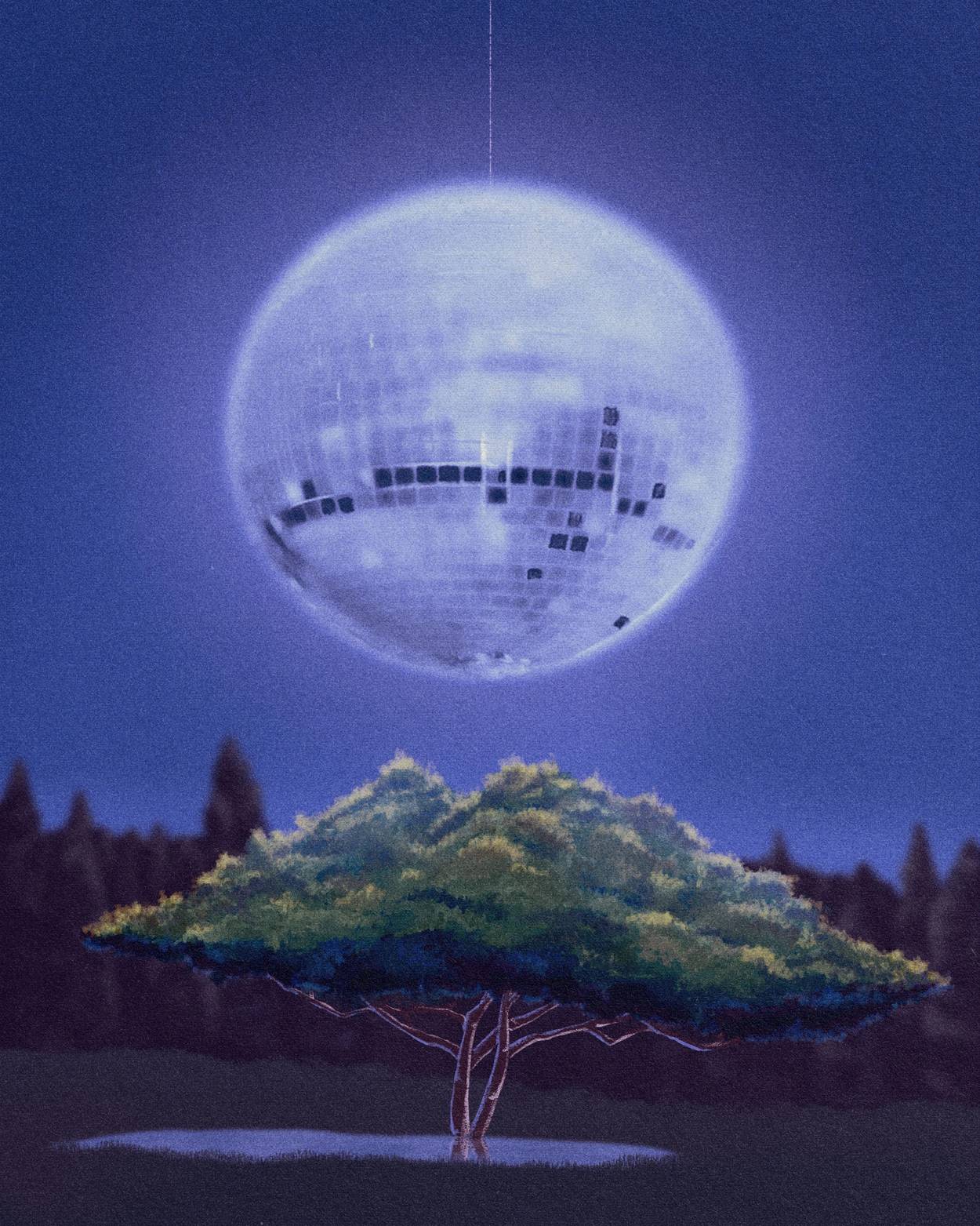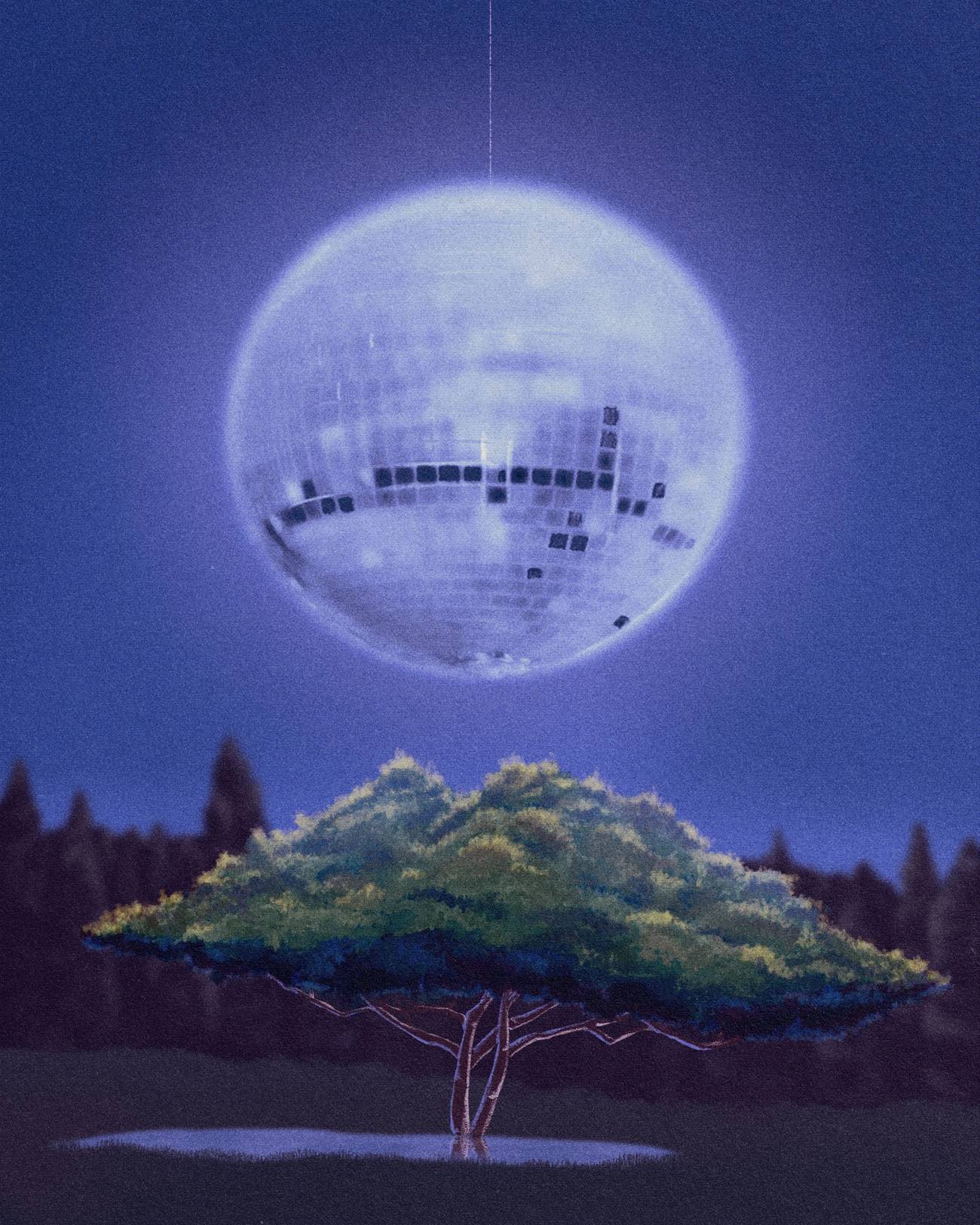The Power of a Party
When to be Jewish is to feel besieged, how should we celebrate a bat mitzvah?




In December 2019, my daughter read from the Torah in Jerusalem and became a bat mitzvah. To celebrate, I offered her cash, a second ear piercing, yet another vacation. Just about anything, I strained to make clear, except a party.
She wanted the piercing. She also wanted a party.
With a divided heart, I booked a dance hall in downtown Manhattan for March 14, 2020. Then, with just two days to go, the country shut down as the pandemic surged. The party was put on hold. Weeks passed, then months, and finally a year.
What my daughter still does not know was that I hoped for the party to fade away, for reasons that long predated COVID-19. My feelings about bat mitzvah bashes had been blemished by my adolescence in the razzle-dazzle 1980s, saddling me with an ambivalence that had persisted into parenthood.
I became a bat mitzvah in 1987, when the decade of glitz met an insurgent second-wave feminism then engulfing the Conservative suburban shul in which I was raised.
My parents, as I saw them then, were deliberately uncool and reliably embarrassing. They responded to the times accordingly. First, my mom signed up for our shul’s second-ever adult bat mitzvah course, hotly debated between our community’s progressive and traditional factions; her ceremony was set to take place the year before mine. Next, she announced two separate parties for me: a quiet luncheon for the adults at a country club that we did not belong to and a “loud music party” for the kids in our not-really-finished walkout basement.
I was mortified. My Hebrew-school friends were accustomed to swanky blowouts: posh dinner buffets, elaborate ice-cream sundae bars, and massive, crowded dance floors that shook all night. My non-Jewish friends from school and swim team were stunned from the opposite direction—by the printed invitations, the catering, the deejay, the decorations that transformed our basement into a Midwesterner’s idea of a discotheque. They gaped at the small army hired to carry it out.
“All of this is for you?” a swim-team dad asked/accused me in our driveway. I blushed. I cringed. I wanted to shout, “You should have seen the Silverman spectacle last weekend at the Ritz!”
I knew that being Jewish wasn’t about over-the-top extravaganzas. But with such big events for 13-year-olds, it sure looked that way from the outside.
That’s why, more than 30 years later, as my daughter’s bat mitzvah celebration loomed, I found myself bedeviled by the same optics, which might be best summed up by a unit theme of her Peoplehood class in day school: How to Be Jewish in a Non-Jewish World.
If I knew that there was more to being Jewish than being extravagant, then much of the credit goes to my first-grade teacher in Hebrew school in 1981, Gveret Cohen.
From the moment I saw her, she struck me as wonderfully exotic, in the old-fashioned, flattering sense of the word. She wore year-round cashmere sweaters, tea-length wool skirts, and a blond-gray pouf of hair—all three perpetually crisp as crepe. Her tangerine lipstick never faded and her owl-eyed reading glasses were of the kind associated with Iris Apfel today. Best of all was the way that she reminded me of the leathery, unapologetically sun-spotted old folks kvelling around the pool at my grandparents’ blocky condo complex in Miami Beach, mixing English with what sounded to me then like an array of plummy European languages, which they all seemed to understand despite claiming to come from all kinds of countries.
Her icebreaker on day one went something like this.
In 1941, I was your age. My life looked like yours except in Poland. I went to school and took piano lessons. My parents were doctors. One day I came home and they were gone. Soon I was on a train. One day the door opened. I jumped out into the tall grasses and ran toward the forest where I lived until the end of the war.
I loved this story. I hoped she would tell it every Tuesday afternoon. I didn’t know Jewish girls could have such exciting lives. But clearly they could because every few months she brought in a new parade of old people who’d recount miraculous girlhood derring-do in the face of evil men called the Nazis, of whom I had some idea from watching Raiders of the Lost Ark. Those guys were clowns, from what I could gather, so it didn’t seem far-fetched that they could be outfoxed by a 7-year-old of any gender.
These stories remained my favorite part of Hebrew school—and my favorite part of school, period.
One evening, when I was in sixth grade and just starting to study my Torah portion, I overheard my mom on the phone with a woman called Sylvia who was in her adult bat mitzvah class. She seethed: “I didn’t burn my bra in the ’60s to be a second-class citizen at shul!”
They were plotting the suburban equivalent of revolution.
The goal was egalitarian minyan—and with it, full citizenship for women in our Conservative shul.
Now the adult bat mitzvah class was starting to make sense to me, even if the performance of it still made me self-conscious. It was a claim for being counted by the broader community, a logic that I soon applied to myself. If my eight hours of Hebrew school per week were equal to the time my male classmates put in, then why should only their bar mitzvahs count?
But of far greater importance to my inglorious sixth-grade self was how this feminist framework might help me worm my way out of the social immolation of the “loud music party” in our basement. To be clear, I wanted the haftorah, the new silver-threaded sweater dress, the full citizenship. It was the basement party that I strove to set a match to, even if it never occurred to me to take the necessary step of devising a plan to thwart what I perceived as its attendant humiliation.
One afternoon, as our Hebrew-school carpool rolled up to shul, I saw the solution. I was sure of it. The exterior was entirely defaced in swastikas and the usual Hitler-should-have-finished-the-job slogans. As alarming as the content was its volume, covering the colossal outer walls of the double-height main sanctuary. I tried to envision how the culprits reached spots that only seemed accessible via rappelling gear. I wondered if the adult group’s bat mitzvah service would still be held inside in a few weeks as scheduled.
To my eternal disgrace, I did a little dance on my inside. Who needed the villain of the patriarchy when an anonymous pack of suburban Nazis might have just saved my social life, such as it was?
In other words, who throws a party after an attack like that?
The answer: Jews.
Of course the adult bat mitzvah class stayed on course with their service. It was the party that changed; it got bigger. What had been planned as a staid luncheon was remade into a nighttime dance party in someone’s backyard with string lights and Sylvia’s very cute nephew at the turntable till late.
The real surprise of the evening was the major dance floor moves of Gveret Cohen and two other Hebrew school teachers whose childhoods in DP camps were similarly familiar. When they’d seen the swastikas, they signed up for the adult class, which had secured them that evening’s invitation and starring roles in the egalitarian-minyan movement.
Back then I couldn’t understand how antisemitic vandalism might inspire a trio of 40-something refugees to become bat mitzvah, much less why it might galvanize a U-turn from demure luncheon to rollicking bat mitzvah bash. Now I can only speculate.
Speaking out is one form of resistance. Joy is another.
In May 2021, more than 14 months after her party had first been postponed, my daughter and her friends were suddenly vaccinated. The weather turned. Our temporary pandemic relocation had gained us a backyard. Her long-delayed party was back on.
She was thrilled. I was … trying.
I thought of the swim-team dad in the driveway: “All of this is for you?”
I cursed the optics of the 1980s and the way that they still tormented me as we neared 2020. It was as if I’d guzzled a tall glass of amnesia, drowning out the positive examples of my childhood—my own fun, not-embarrassing-after-all “loud music party” in our never-really-finished basement; the Hebrew-school teachers whose anti-Nazi activism fed their feminism; the eventual egalitarian minyan at our shul.
Then war erupted between Israel and Hamas, and the world was aflame in one-sided condemnation.
I wondered: Was a dance party for 14-year-olds during wartime tone-deaf?
My mind reeled back to pulling up with my Hebrew-school carpool to see our shul tagged with swastikas. For years I found it strange that it didn’t scare me. Now I wonder if my sense of safety came from the adults refusing to cower into quiet politesse. Instead, they reveled in their Jewishness. Or so they made it seem, throwing an exuberant dance party celebrating not just this ancient rite of passage but also its modern march toward inclusion—despite efforts, within their community and without, that would sideline them into genteel silence.
My daughter’s backyard party didn’t look so different from my mom’s bat mitzvah celebration nor my own—a little too loud, a little too sparkly, a little out of step with the world at large.
“All of this is for you?”
Yes, and: The catharsis of it is for the rest of us in this odd little band of outsiders, too.
Rebecca Sonkin’s essays have appeared in The Washington Post, Tin House, Los Angeles Review of Books, and elsewhere. She is reporting a memoir about a deadly car crash.